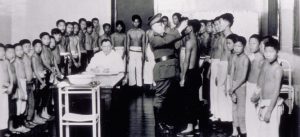This film is about a family mourning the suicide of Nora Kurtz, an ex-wife and mother who had attempted suicide several times before finally succeeding. Before she died, Nora left the Passover meal ready, left letters behind for those she cared about, and even left coffee in the pot. Jewish custom does not allow for suicide victims to be buried alongside others, and so it was difficult to find her eternal resting place, but Jose, her ex-husband, found her a spot between his parents.
Overall, the movie was heartwarming, but the only person who showed character development was Jose. At first, he purposely did not follow the Jewish customs and ordered a pizza topped with sausage and bacon during Passover. He was eventually able to put his atheism aside so Nora could rest in peace. He even ate the kosher meal that was prepared for Passover, after initially refusing to eat anything that was left in the refrigerator. When he read the letter Nora left him, I like to think he was finally able to understand Nora and realize that she never stopped loving him. I felt that there was not much dialogue, but the score and cinematography filled up the empty space in a discrete way, and when there was dialogue, a sort of dark/dry humor complimented the somber tone. An example of the use of camera angles is at the end of the movie when the camera zooms out from the apartment building. It goes without saying that no matter how massive a problem seems to an individual, it is minuscule in the grand scheme of things.
In relation to class, it was interesting to see a Latino, Jewish family. Our class has focused a lot on Christianity and Catholicism, that at times it is easy to forget that other religions are present in Latin America. Moreover, it was interesting to see that the cast looked very European with light skin and hair, and the family had a Germanic surname of Kurtz. On the other hand, the maid Fabiana, has darker skin, is from a lesser-known village, and is Catholic or Christian. These are characteristics that are typical of indigenous peoples. Her role as a maid ties into the perpetual servitude/peonage of indigenous populations in Latin America that has been present since the land was colonized by European nations. It would have been simple to cast another white-passing actress, but this casting call seems to be purposeful in the perpetuation of stereotypes.


